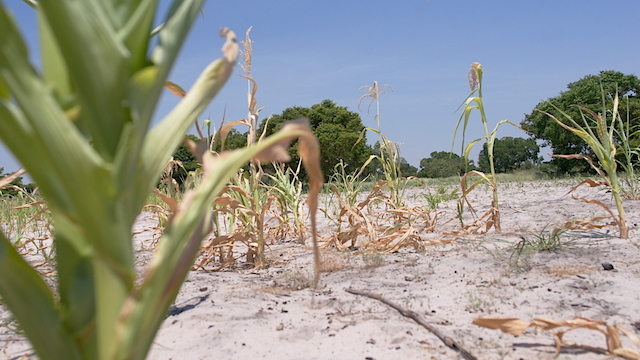Likwama Farmers’ Union chairperson Alfred Chilinda has encouraged crop farmers in the Zambezi region to diversify their production in order to expand their income.
The majority of crop farmers in the region mostly produce maize, mahangu and sorghum.
Chilinda said yesterday that 75% of farmers were unable to produce anything during the last harvest season, due to drought, as well as only planting the traditional corn variety.
He emphasised that if farmers opt to diversify production by planting other income-earning produce like potatoes, beans and sunflowers in future, they would be able to tap into additional markets.
“The region has been hit hard by drought, and as a result, farmers were not sure whether to cultivate or not.
However, by God’s grace, the region started receiving showers from late November, and farmers have started to cultivate their fields.
“Although the challenge is that it’s late for some traditional crops, [thus] it may not give them any yields.
However, if they diversified their production and incorporated other products, they would be able to walk away with something.”
Chilinda said farmers have plenty of land they can use to diversify production, and predicted rain forecasts look promising, so they should take advantage of these factors.
Some farmers in the region told The Namibian the drought has crippled them to the extent that they will only be able to plant the mahangu variety this season.
The headman of the Bitto area in the Sibbinda constituency, Vincent Kalikanwi, said farmers are invested in planting mahangu because it does not need as much time as white maize.
He highlighted that inconsistent rain patterns in the area further impact their chances of positive yields, even for the mahangu.
“It’s now too late to plant the normal maize seeds as it takes more time, so you need to start planting in November. However, other farmers that have the hybrid seeds of the white maize are taking their chances,” he said.
Kalikanwi emphasised that farmers in the area have lost a lot of livestock due to drought as they have no grass for grazing.
He noted that even as farmers are busy cultivating their land, they are unable to use their oxen to plough because they are too skinny to be put to work.
Similarly, a farmer in the Masida area, Rejoice Kabuku, said she only started cultivating her seven-hectare field late in December due to the uncertain rain pattern.
She will also only plant the mahangu variety in order to have something to harvest.
“My chances of harvesting enough crops is not only hampered by the uncertain rain pattern that has led me to start cultivating late but also the wildlife, as we live in a conservancy area.
The elephants will be all over my field by the time I am ready to harvest. However, I will remain hopeful,” she said.
The chief meteorological forecaster at the Namibia Meteorological Service Odillo Kgobetsi last week said the region has received heavy rainfall so far, with flash floods reported in some areas.
“Storms of normal to above normal are expected during the season of January to March in the Zambezi region. Therefore, more flash floods are expected,” he said.
Stay informed with The Namibian – your source for credible journalism. Get in-depth reporting and opinions for
only N$85 a month. Invest in journalism, invest in democracy –
Subscribe Now!








